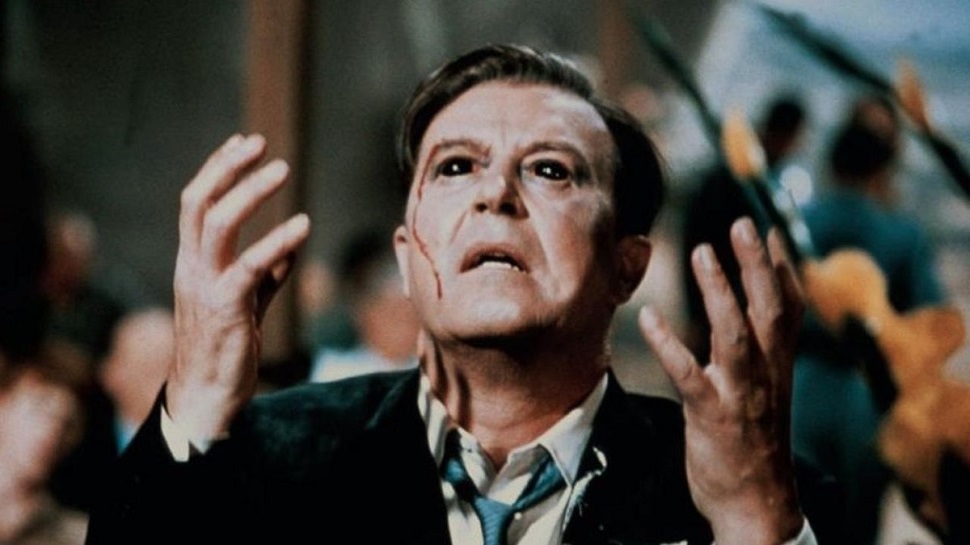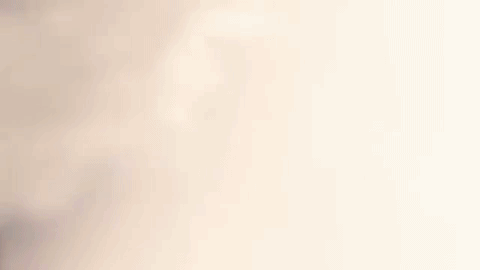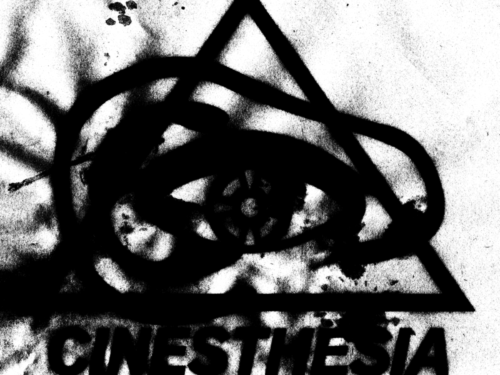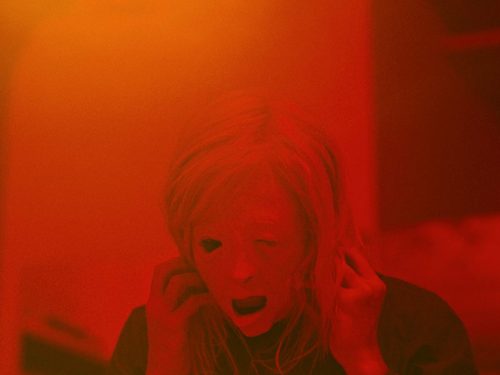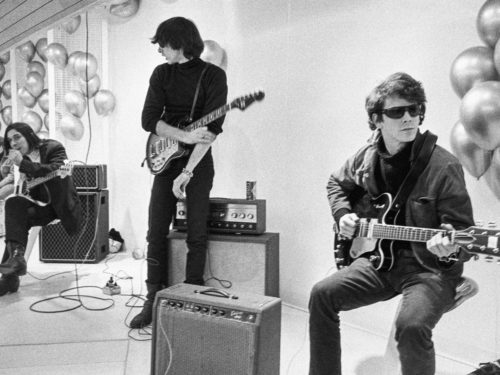Shapes that won’t cohere, colors that don’t align, flows and forces descending from infinity. Cosmic Horror is a thing of a different order
“And now have I not told you that what you mistake for madness is but over-acuteness of the senses?”
— Edgar Allen Poe, “The Tell-Tale Heart”
In 1963, Roger Corman made a low-budget science fiction quickie from a script by Robert Dillon and Ray Russell, called X: The Man with the X-Ray Eyes. Here’s what you see at the very end.
A man with blood dripping from pitch black eyes looks up and says:
I’ve come to tell you what I see. There are great darknesses. Farther than time itself. And beyond the darkness … a light that glows, changes … and in the center of the universe … the eye that sees us all.
He looks up at the sky, but he doesn’t see the sky — he sees through the sky. He sees shapes that won’t cohere, colors that don’t align, flows and forces descending from infinity. He screams. A few moments later, he tears out his own eyes. Blinds himself rather than for one second more see farther and deeper than man was meant to see.
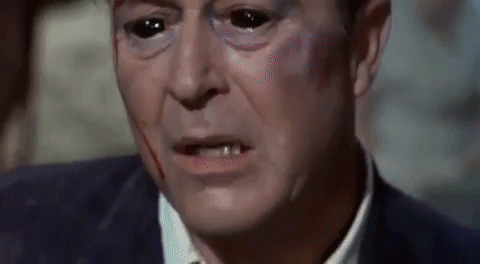
This is cosmic horror.
There are a lot of different kinds of horror in fiction and film, you can rattle them off as well as me. There are creature features and slasher flicks, psychological and social thrillers. Human and inhuman monsters stalk in the shadows, threatening physical or psychic violence, promising that there are far worse things awaiting humans than death.
Cosmic horror is a thing of a different order.
“The true weird tale has something more than secret murder, bloody bones, or a sheeted form clanking chains according to rule. A certain atmosphere of breathless and unexplainable dread of outer, unknown forces must be present; and there must be a hint expressed with a seriousness and portentousness becoming its subject, of that most terrible conception of the human brain — a malign and particular suspension or defeat of those fixed laws of Nature which are our only safeguard against the assaults of chaos and the daemons of unplumbed space.”
— H.P. Lovecraft, Supernatural Horror in Literature
How do you film the unthinkable? What do you put in front of a camera to represent something that can’t be truly comprehended by human sense organs? In a visual medium that routinely flaunts the laws of nature for the sake of selling laundry detergent, what can be done to place the viewer into any truly disorienting and disturbing relationship to the reality before their eyes?
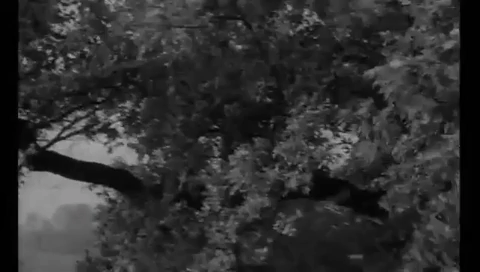
It isn’t enough to create a really scary-looking monster. The most terrifying creature design of all time, created by H.R. Giger, is not the part of Alien that gnaws at us at the deepest level. The monster gets our blood pumping, but what stops our pulse are those frozen moments we spend contemplating the mystery of the giant pilot, the vastness of the egg room, the eldritch origins from which this thing has descended. In Alien, the moment to moment terror comes from the beast lurking in the air ducts, but the cosmic fear comes from the knowledge that this encounter is only the lightest brush with the smallest piece of a darkness so deep and so old that we cannot ever hope to see the shape of it.
The 1957 British film Night of the Demon features another brilliant creature design, this one not so much genuinely frightening as it is charmingly monstrous. The film concerns a Satanic sorcerer who settles scores with his enemies by conjuring a demon to kill them, but all of the deaths look to the uninitiated like accidents. It is only because the film audience, with its privileged view into secret scenes, gets to see the monster, that we know the sorcerer’s powers are real. But Jacques Tourneur and Charles Bennett, the director and the writer of the film, respectively, never wanted the creature to appear on screen at all. They lost that argument to the producer, Hal Chester, who did not understand what Tourneur and Bennett understood. Tourneur, who had directed the shadowy pool scene in the Val Lewton production Cat People, understood better than anyone other than Lewton himself that what is unseen can be far more frightening than anything you can show the audience.
Seeing the demon produces a certainty for the audience, and certainty is comforting. Tourneur and Bennett’s film had been devoted to the continual deferral and defeat of certainty. The film is full of events that feel sinister and supernatural, but which cannot be definitively labeled as such. A particularly strong gust of wind, a piece of paper that seems to move, a cloud of smoke in the woods — the film shows us mundane events that through the tonal control of the filmmakers become portents of a doom that we do not have adequate words to describe nor legible images to fall back on for understanding. The demon’s appearance is a wonderful visual, an exhilarating scene. But it drags down the film’s carefully woven fabric of undefined dread.
“Creative minds are uneven, and the best of fabrics have their dull spots. Moreover, much of the choicest weird work is unconscious; appearing in memorable fragments scattered through material whose massed effect may be of a very different cast. Atmosphere is the all-important thing, for the final criterion of authenticity is not the dovetailing of a plot but the creation of a given sensation. We may say, as a general thing, that a weird story whose intent is to teach or produce a social effect, or one in which the horrors are finally explained away by natural means, is not a genuine tale of cosmic fear; but it remains a fact that such narratives often possess, in isolated sections, atmospheric touches which fulfill every condition of true supernatural horror-literature. Therefore we must judge a weird tale not by the author’s intent, or by the mere mechanics of the plot; but by the emotional level which it attains at its least mundane point. If the proper sensations are excited, such a ‘high spot’ must be admitted on its own merits as weird literature, no matter how prosaically it is later dragged down.”
— H.P. Lovecraft, Supernatural Horror in Fiction
Cosmic horror is most often achieved only in moments and glimpses — which is appropriate to a genre of fear that is rooted in the idea of the veil of reality slipping just enough to shatter the minds of anyone who notices what has been revealed. And like the pulp stories from which the concept of the weird tale originated, it is often in the most disreputable, dismissed or marginal works that we find the most unexpectedly powerful moments of cosmic fear, often created not through state-of-the-art special effects, but through artful manipulation of basic film techniques. The Corman film quoted at the top is one of the most shockingly successful depictions ever put on film of the human mind wrestling with incomprehensible and terrible truths. It takes a cheap 1963 visual gimmick and uses it so deftly as to create a vision of pure existential horror out of exactly two images: a man’s tortured face, and an unclear blur of shapes and lights. The Innocents, the 1961 adaptation of Henry James’ The Turn of the Screw, is a masterclass of supernatural ambiguity, and one of the most terrifying moments in the entire film is created simply from a lighting cue. The incoherence of the plot and continuity of Lucio Fulci’s 1981 The House by the Cemetery is elevated beyond incompetent storytelling to become an atmosphere of confused terror all its own. George Barry’s 1977 Death Bed: The Bed that Eats, depicts a man’s soul trapped in a painting by merely placing an actor in a dark space lit through the back of the painting. It is an absurd, and absurdly simple, choice that communicates its unfathomable reality so directly and so efficiently that it bypasses our rationality and makes the impossible come true in front of us.
David Lynch and Mark Frost’s Twin Peaks is perhaps the most sustained engagement with cosmic horror ever produced in film and television, with the cosmic element gaining more and more prominence as the project transformed from Network TV show, to Art House Feature Film, to prestige TV event. The central image is of David Lynch himself, playing FBI agent Gordon Cole, staring into a vortex-like portal into the hidden superstructure of reality, and it is rendered with gestures as simple in 2017 terms as Corman’s were in 1963. The vortex itself is a computer animation for which no effort has been made to render it “realistic” or “convincing.” Instead it merely is, in all its uncanny artificiality. And Lynch’s experience is rendered through the most basic tools of cinema: framing, focus and light. Throughout Twin Peaks, characters move through different dimensions and worlds through mere cuts and fades, and the sheer mechanical simplicity enhances the strangeness while at the same time anchoring that strangeness in the practical reality of the filmed event. The mind is torn in two directions at once. Rationality surrenders. Humanity blinks at the void.
Find the complete October Horror Archive here:
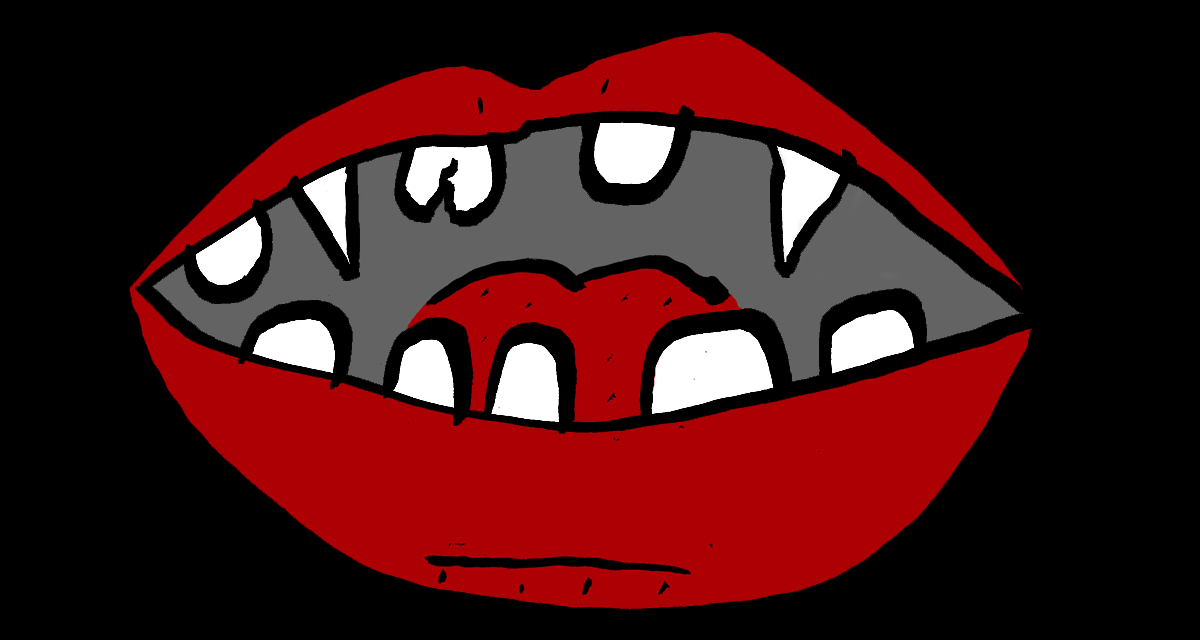
Follow our list of the 31 Days of October Horror on Letterboxd
(Split Tooth may earn a commission from purchases made through affiliate links on our site.)

